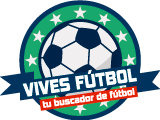MORGANTOWN, W.Va. – If you look down on the Mountaineer Field sidelines Saturday and see West Virginia’s coaches and players staring at computer tablets, don’t assume they are checking out
MORGANTOWN, W.Va. – If you look down on the Mountaineer Field sidelines Saturday and see West Virginia’s coaches and players staring at computer tablets, don’t assume they are checking out social media or watching the latest TikTok video. Instead they are utilizing part of college football’s leap into the high tech age.
The NFL has allowed coach-to-player helmet communication for the last 30 seasons, and in recent years, even some high schools have not only been permitted the use of helmet communication, but they also have been allowed to use computer tablets with video capabilities on their sidelines.
Now in 2024, the NCAA is permanently allowing both tech features in its college ranks.
Such tech capabilities were permitted on a trial basis in last year’s bowl games, and West Virginia used such devices in its 30-10 victory over North Carolina in the Duke’s Mayo Bowl.
That wireless wizardry has been expanded to the upcoming 2024 regular season. The Mountaineers are gearing up to use such gear on game day, though they are still working out some glitches.
“It’s going to be a learning experience,” acknowledged WVU head coach Neal Brown recently. “It’s no different than any technology. When it works, it is great, but when it doesn’t, it’s a pain.
“There may be times where you have to have a Plan B.”
Each college team is permitted one player on the field at a time, identified by a green dot on his helmet, who can wear the coach-to-player communication.
On offense, obviously the quarterback will receive the communication from the coach. Brown isn’t ready yet to reveal who on his defense will get the calls, though
“It’s to-be-determined, and there is some gamesmanship in that as well, so I won’t say it publicly,” admitted Brown with a wry smile when asked what WVU defender will receive the call.
Teams don’t have a large amount of time to make their calls. While the play clock is 40 seconds, the communication link will be turned off with 15 seconds remaining on the play clock or when the ball is snapped, whichever comes first.
Thus coaches have to be judicious about how much information they give in their communication both in terms of keeping things short and not overwhelming the player with too much info.
“You have to be careful with it,” noted WVU quarterback coach Tyler Allen when asked how much information will be relayed to the quarterback in the coach-to-player communication. “Coach Brown and I have talked a lot about it. (The quarterbacks) have been taught and coached to do certain things. If you don’t want to clutter their mind, you tell them a play and maybe there is a small reminder, but you’re not sitting there telling them, ‘Hey, this is the progression, or this is your pre (read).’ He already knows that.
“We want him to go play. You don’t want to overload him, so there won’t be much of that.”
The Mountaineers have used the helmet communication in some practices during their preseason camp, and they also recently received their tablets from the Big 12 Conference, which made a league-wide deal for all teams to obtain Microsoft Surface Pros.
Unlike the NFL, whose tablets are not allowed to display video during games, the sideline devices in college are only to be used to view in-game video. That video can be the television broadcast feed, or it can be the coach’s sideline angle or the coach’s end zone view. A team can have up to 18 active tablets in use on the sidelines, in the coach’s booth and in the locker room.
“After a drive, you’ll see Garrett (Greene, West Virginia’s starting quarterback) come to the sideline, and he’ll be on his (tablet) and I’ll be in the pressbox on mine,” explained Allen of WVU’s plan. “I can send stuff down to him, and we can talk through stuff.
“That will be different from the past, but I’m excited about it.”
The tech world has come to college football but in most ways, the game will still be decided by the fundamentals, just as it has been since 1869 when Princeton lined up against Rutgers on the banks of the old Raritan for the first intercollegiate football game.
“It still comes down to blocking and tackling. The tablet is not going to help you with that,” stated Brown. “The tablet may help you understand where they’re going to be, but you still have to win it on the field. We can get as fancy as we want to, but as always, it’s usually going to come down to about eight or nine mano a manos during each play, and if you win your share, you usually win the game. As much as we progress, it still comes down to the basic things.”

